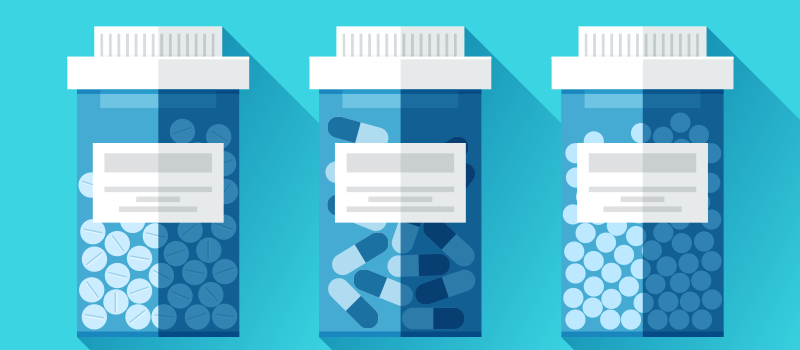What’s the Buzz
The Bee Healthy Blog
Using Propranolol for Migraines, Anxiety, High Blood Pressure

Propranolol is a medication developed more than 50 years ago by a British scientist called Sir James Black to treat angina pectoris (chest pain). Since then, propranolol has become a commonly-used treatment, effective for several cardiovascular and non-cardiovascular conditions.
Please continue reading to learn more about the uses of propranolol, including its use in treating high blood pressure, migraines, and the physical symptoms of anxiety, such as shaky hands, dry mouth, nausea, and fast heart rate.
What is propranolol?
Propranolol belongs to a family of medications called beta-blockers. These drugs work by preventing adrenaline and norepinephrine from binding to the heart's beta receptors; as a result, beta-blockers relax the blood vessels and slow the heart rate; thus, they reduce the heart's workload and decrease blood pressure.
Propranolol is used to treat angina (chest pain), irregular heart rhythms, and other circulatory disorders. In addition, propranolol also treats or prevents heart attack.
Other uses of propranolol include treating migraine headaches, relieving the physical symptoms of anxiety disorders, tremors, and pheochromocytoma (adrenal gland tumor).
Propranolol for Migraine Headaches
Propranolol is commonly prescribed for migraine prophylaxis (prevention). It works by preventing the dilation of the brain blood vessels, which contributes to migraines. The starting dose of propranolol for migraine prevention is usually 40 mg to 160 mg daily and can increase to 320 mg daily based on response.
How effective is propranolol for migraine?
It can take up to 12 weeks for the effects of propranolol to become apparent. If this medication works for you, it may help to make your migraine attacks less frequent, less intense, and shorter.
Can you take propranolol during a migraine?
The role of propranolol in migraine prevention is well established. However, studies have found that it is not effective in treating acute attacks of migraine. Other drugs are more effective in relieving migraine pain. These include:
Antiemetics and pain relievers
- Antiemetics to relieve nausea and vomiting.
- Analgesics or pain relievers include acetaminophen (Tylenol) and nonsteroidal anti-inflammatory drugs (NSAIDs) such as aspirin, ibuprofen, diclofenac, etodolac. Combination products containing analgesics and caffeine are often very effective in relieving migraine headaches than just analgesics alone.
Migraine-specific drugs
- Ergot alkaloids like dihydroergotamine (D.H.E. 45, Migranal, Trudhesa) work by narrowing or constricting blood vessels.
- Triptans or selective serotonin agonists like almotriptan (Axert), sumatriptan (Imitrex Statdose, Tosymra, Zembrace SymTouch), frovatriptan (Frova), eletriptan (Relpax), rizatriptan (Maxalt MLT), zolmitriptan (Zomig MLT), and naratriptan (Amerge). These drugs work by narrowing pain-sensitive blood vessels in the brain. They also work similarly to serotonin, a brain chemical, to reduce pain, nausea, and other symptoms of migraine.
When should I take propranolol for migraines?
Propranolol is available as an immediate- and long-acting formulation. You need to take the long-acting propranolol less frequently because it releases the medicine slowly - usually, once a day is enough. Your doctor may advise you to take propranolol at bedtime in the beginning as this medicine can make you feel dizzy. Once you get used to the medication, you can take it in the morning. To continue getting the medicine’s benefits, it’s important to continue taking propranolol for migraine prevention even if you feel well.
Propranolol for Anxiety
There are various types of anxiety disorders, such as generalized anxiety disorder, separation anxiety disorder, social anxiety disorder, specific phobias, and panic disorder or panic attacks. Other anxiety disorders include PTSD or post-traumatic stress disorder.
Propranolol is sometimes used to treat anxiety, specifically physical anxiety symptoms and panic symptoms, such as a rapid heartbeat, sweating, and shaking. This medicine does not cure anxiety disorders, which are caused by chemical imbalances in the brain.
Rather, propranolol is used for the short-term treatment of physical symptoms, for example, fast heart rate caused by intense fear during a panic attack.
Your mental health professional may prescribe other medications, such as antidepressants, that can be used long-term to treat anxiety disorders. Antidepressants work by correcting the chemical imbalances in the brain that cause anxiety disorders.
Is propranolol effective for anxiety?
Many physicians prefer to treat anxiety disorders and other mental illnesses with non-pharmaceutical therapy, such as talk therapy like cognitive behavior therapy (CBT).
Your mental health professional may recommend CBT to manage stress, excessive worry, or a specific phobia, along with propranolol to help with your physical symptoms until you have better control of your anxiety.
Propranolol for High Blood Pressure
High blood pressure is one of the leading risk factors for heart disease and stroke. Beta-blockers like propranolol cause the heart to beat more slowly and with less force. They also relax the blood vessels and lower blood pressure.
Propranolol is available as oral immediate-release tablets, extended-release (long-acting) capsules (Inderal LA, Inderal XL, Innopran XL), and solution (liquid) to treat increased blood pressure.
The long-acting formulations of propranolol are taken once a day at bedtime. These capsules should be swallowed whole without crushing, chewing, or breaking them. The immediate-acting propranolol formulations (tablets or liquid) may need to be taken 2-4 times daily.
What are the side effects of taking propranolol?
Common side effects of propranolol include lightheadedness, dizziness, fatigue, nausea, stomach pain, diarrhea, and constipation. These side effects usually go away once your body adjusts to the medicine.
What happens if I stop taking propranolol suddenly?
Propranolol does not cure mental illnesses like anxiety or physical health conditions like migraine headaches and high blood pressure. Stopping propranolol abruptly may make your symptoms and health condition worse. If you stop propranolol after taking it for a long time, it can cause adverse effects such as palpitations, tremors, headaches, and sweating. Always consult a health care provider before stopping propranolol.
References:

SOCIAL